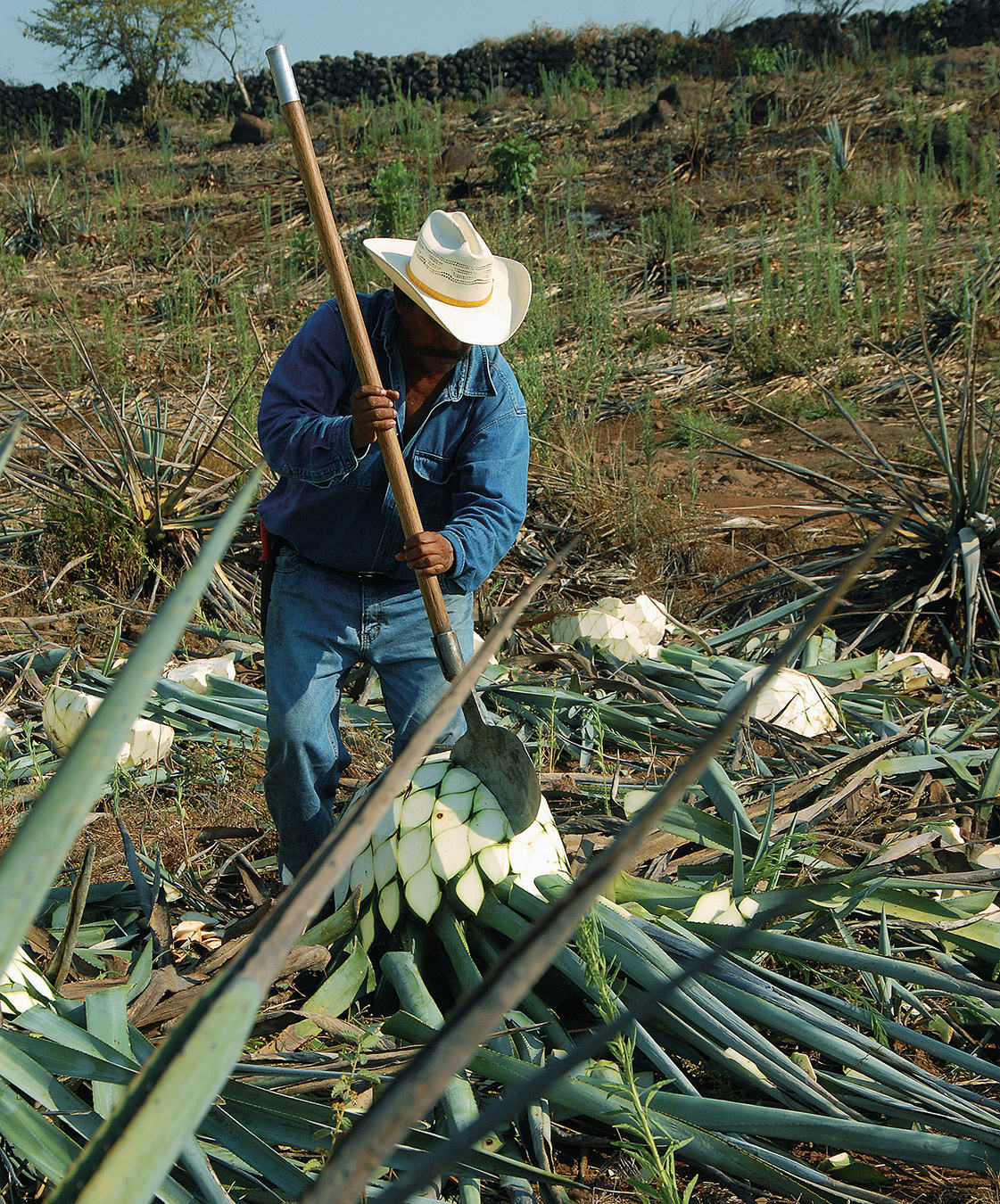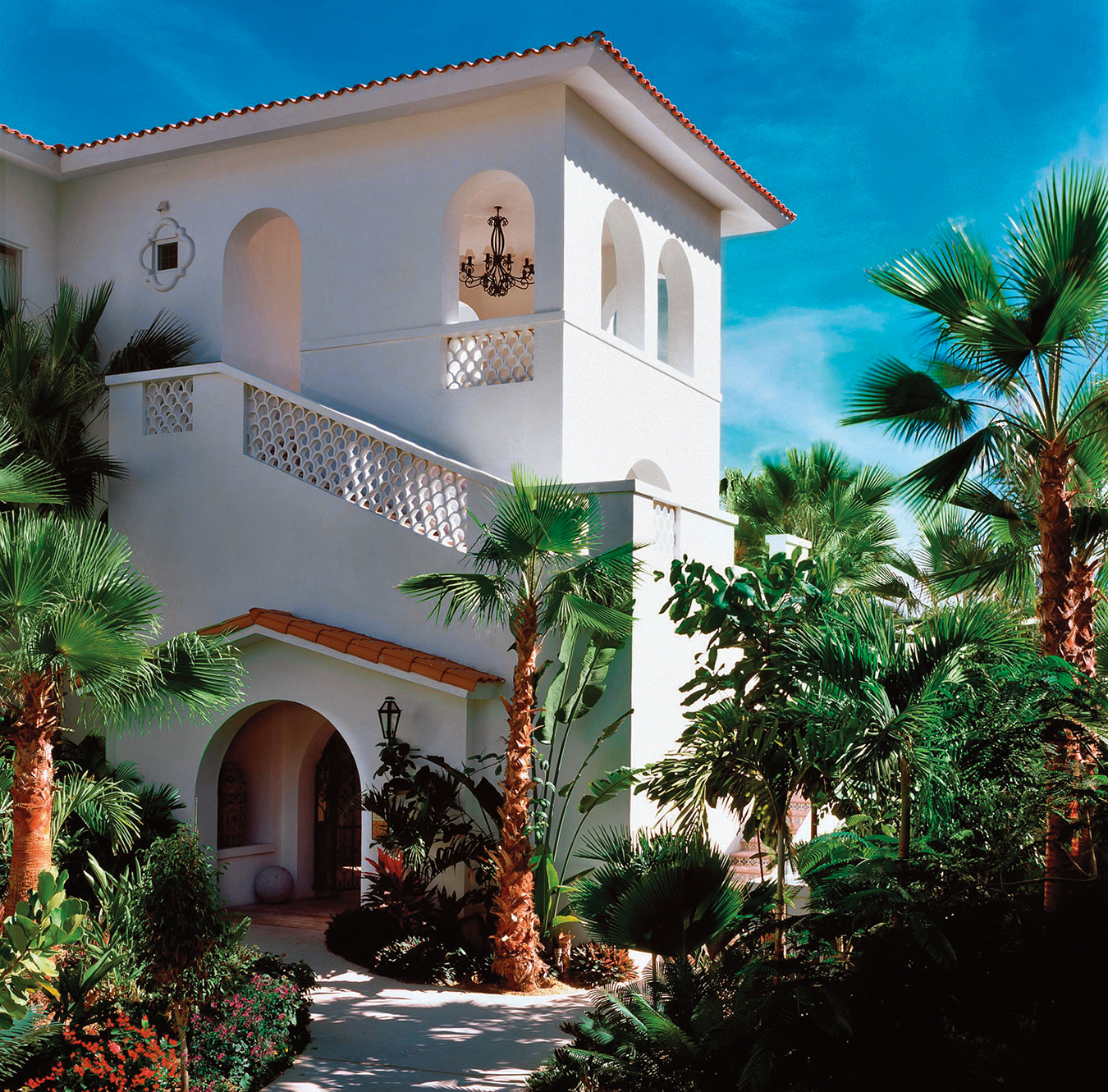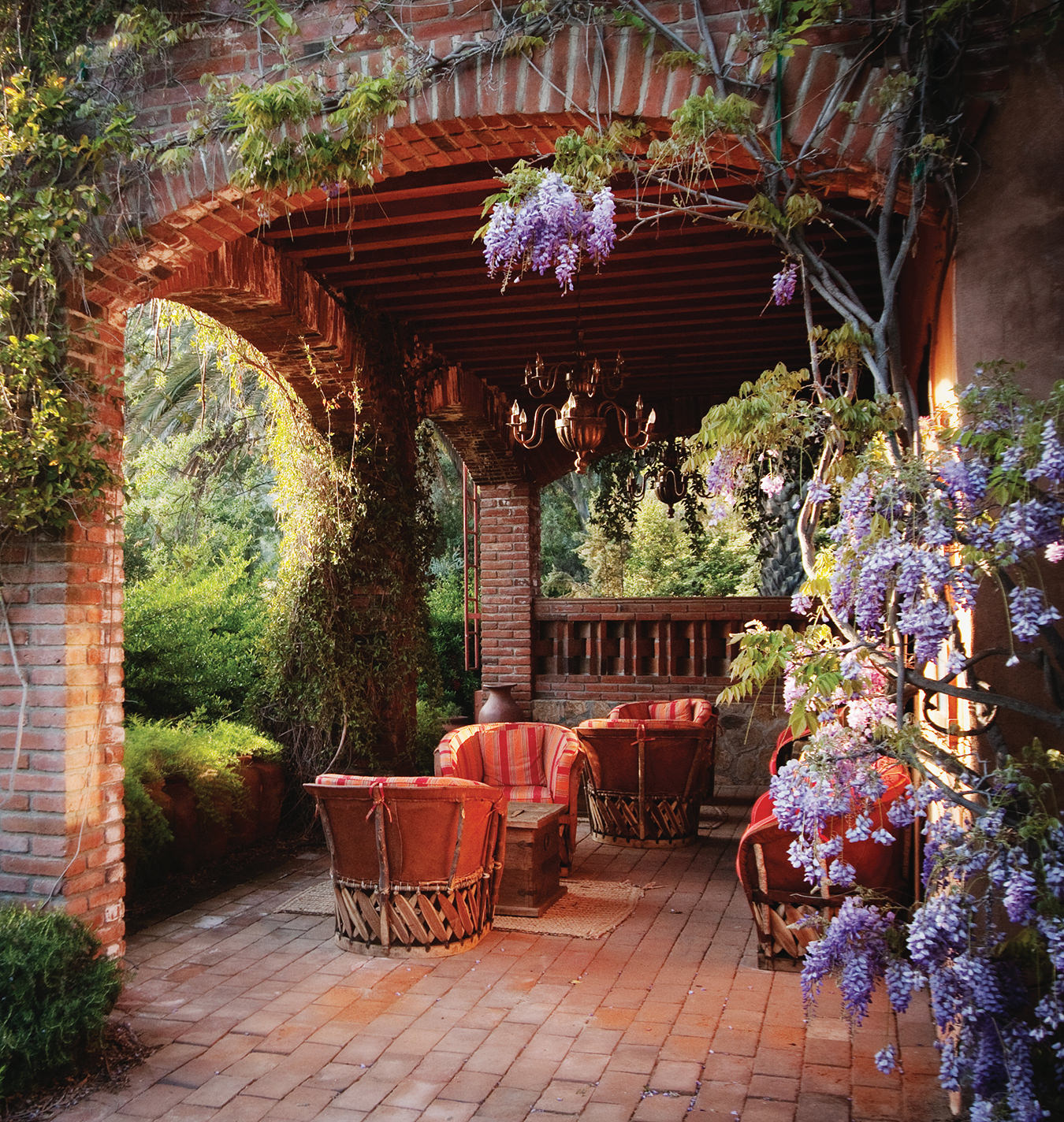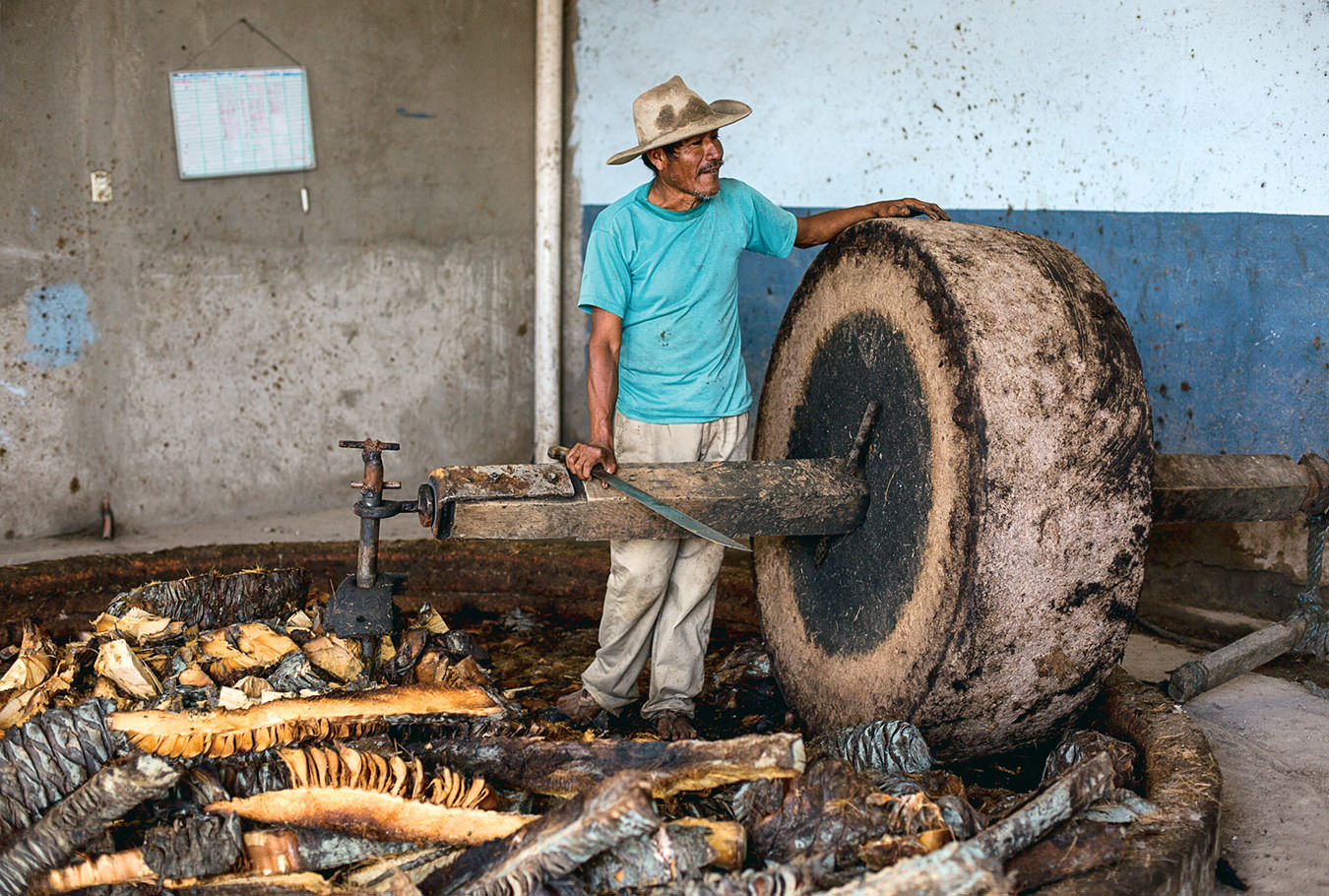Casona Sforza Brings Peace and Prosperity to Puerto Escondido, Mexico
Featuring curvaceous architecture by Alberto Kalach.
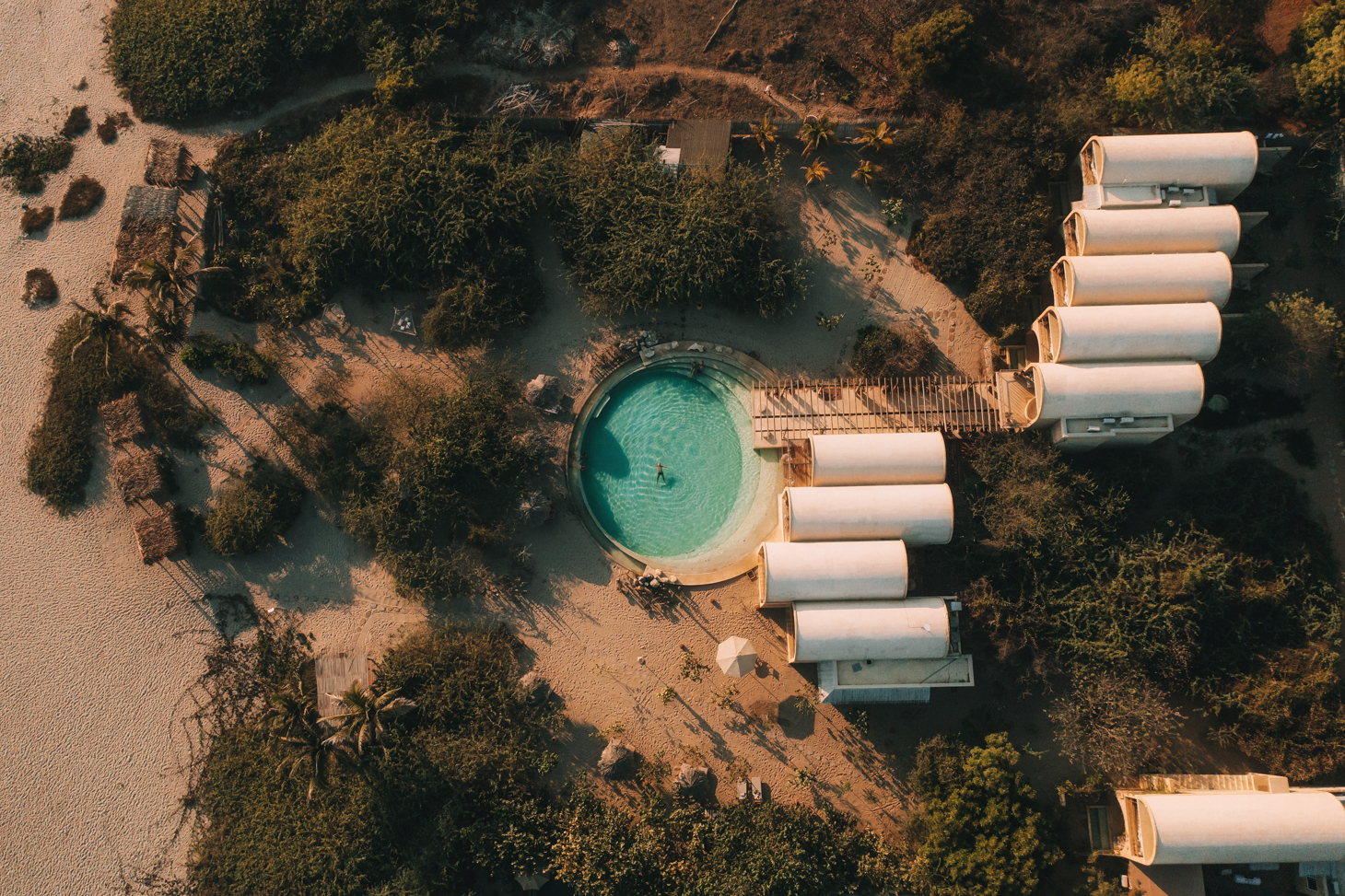
You probably couldn’t build anything over the top in Puerto Escondido even if you tried—it’s just not the vibe. The serene Mexican surf town is known for calm crowds and laid-back locals, which makes it all the more fitting that Casona Sforza, an 11-suite boutique, was originally planned with more humble aspirations: as a private home.
That human-scale origin story isn’t far off from the hotel experience crafted by entrepreneur Ezequiel Ayarza Sforza, who entrusted architect Alberto Kalach with expanding the very idea of hospitality, at a site originally planned for Sforza’s own dream home, to a handful of guests at a time. After years of sketches, the result is a sculptural boutique that harmonizes with the landscape while building on the idea of privacy, environment, and sustainability.
Naturally, you can’t ignore the architecture. Casona Sforza comprises a clutch of buildings, each a series of arched structures like toes sticking up from the sand. With tunnel vision toward the Pacific Ocean, interiors face the coast with vaulted ceilings and clean lines, their view focused on a private stretch of La Barra de Colotepec, a direct connection with nature.
“The hotel features a long corridor—with a water feature in the centre—that leads to the social areas, such as the restaurant-bar, stretching from the rooms to the circular pool,” Kalach says of the saline oasis at the centre of the property. “Its purpose is to channel energies and provide guests with a sense of peace and tranquility.”
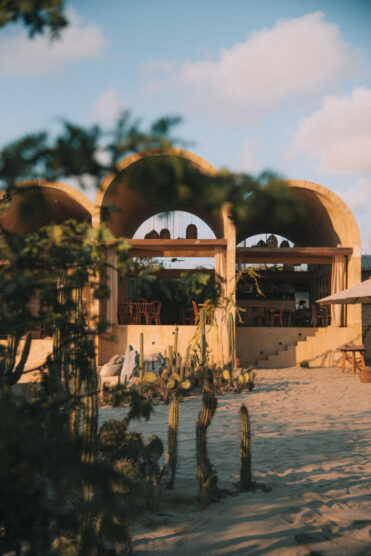
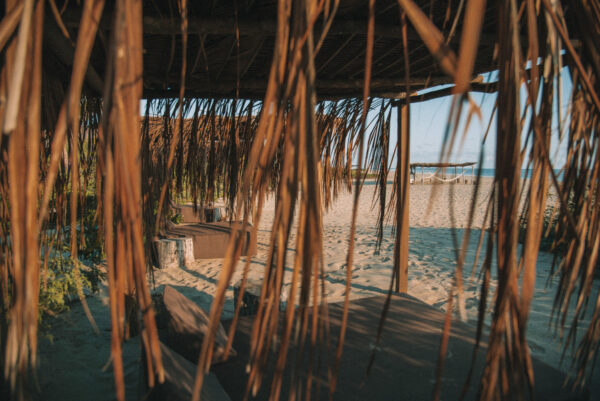
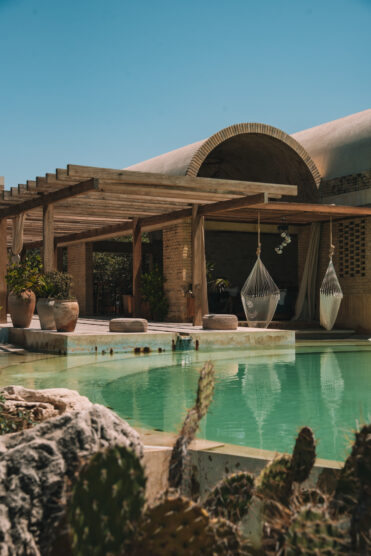
While the architecture is spellbinding, Sforza chose the location for its natural beauty. Kalach invigorated the landscape with local species like majaguas, tabachines, mesquites, and huizaches, not to mention the region’s unmistakable cacti, to root guests in the environment Sforza had dreamed of calling home.
The landscape pays tribute to the ecosystem of this latitude, incorporating shrubs that provide shade and freshness while delineating the different areas and promoting privacy, Kalach says.
That keen attention toward nature wasn’t overlooked in the architectural details. “The property was built with locally produced sand-yellow bricks that receive and reflect sunlight,” Kalach adds. “Natural materials such as macuili and parota woods were also used, along with palm weavings, Oaxacan cotton textiles, and linen details in raw tones. In the suites, the cozy atmosphere is minimal but bohemian, with neutral colours, natural textures ,and soft lighting across the gentle curves of the ceiling.
And those arches, the property’s most characteristic feature, aren’t just for show: they promote efficient air flow, keeping rooms cool without air conditioning and doubling down on the property’s commitment to sustainability.
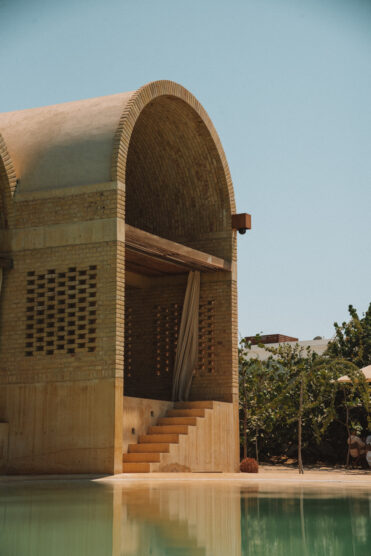
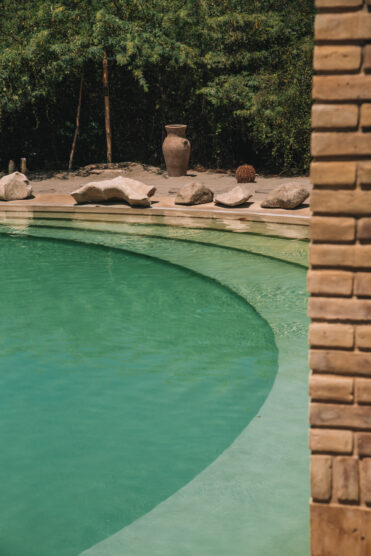
Eco-tourism goes beyond the property itself, back to the reason the hotel exists in the first place. A handful of organic amenities and products, from honey and coffee to shampoo and soap, are produced by hand at the property’s sister project, Pueblo del Sol, located about an hour from the hotel. For over a decade, Sforza has built the project in support of the Indigenous communities around Puerto Escondido, focusing on conserving the environment and local craft. “This includes teaching new trades that promote entrepreneurship through dignified work, providing medical care, offering various recreational activities, and providing schooling for children,” he says.
The problem, as he saw it, was that new generations were losing age-old traditions. The opportunity, which Sforza spearheads, is to recover wisdom at risk of being lost, traditions that also inspire a reverence for the natural world.
That ethos isn’t lost on the guest experience. “Casona Sforza’s concept elevates the value of being conscious, contemplating, and understanding the beauty of a balanced environment,” Sforza says. Beyond dips in the circular saltwater pool or walks along the ocean, the hotel’s wellness program helps clear the way to connecting with the natural world—from reiki to deep tissue treatments, guests can opt for a handful of massages by the sea for an extra dose of tranquility.
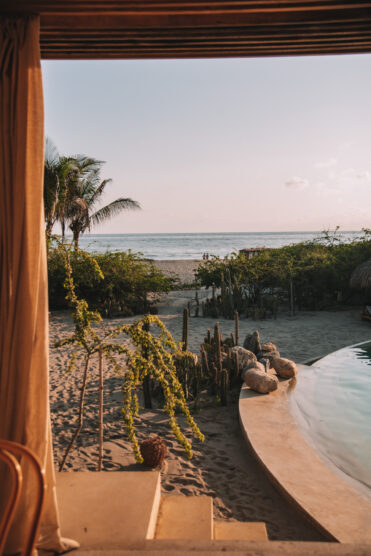
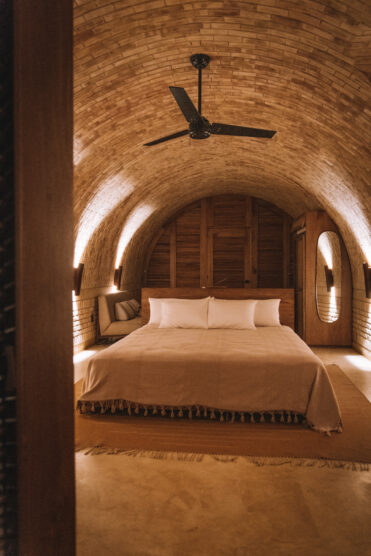
Off the property, the hotel arranges an array of nature-bound activities, like those with an adrenaline rush (paragliding over the Oaxacan coast or surfing lessons on Carrizalillo beach) along with even more awe-inspiring displays (early-morning escapes to spot dolphins or evening excursions to the nearby Laguna Manialtepec to see bioluminescent plankton sparkle in the night).
Back at home base, the commitment to nature peppers the menu at La Bóveda Restaurant, under the direction of chefs Andrés Trujillo and Vanessa Franco. “Natural flavours and aromas due to the absolute freshness of the local ingredients are one of the most important characteristics of so-called product-based cuisine, which has inspired the culinary transformation of Casona Sforza,” Sforza explains. Here, dishes champion ingredients grown nearby and prepared with a French twist, whether it’s an omelette at breakfast flecked with local hoja santa or handmade chocolates spiced with Mexican tabasco for dessert—many of the ingredients produced by Pueblo del Sol.
Casona Sforza, as beautiful as it may be, is a crucial piece of a larger mission, designed to fund Pueblo del Sol to help protect and foster the home of the area’s Indigenous communities. Its beauty may well rest in its most prized amenity: social responsibility.
Photography by Anna Wolf.

